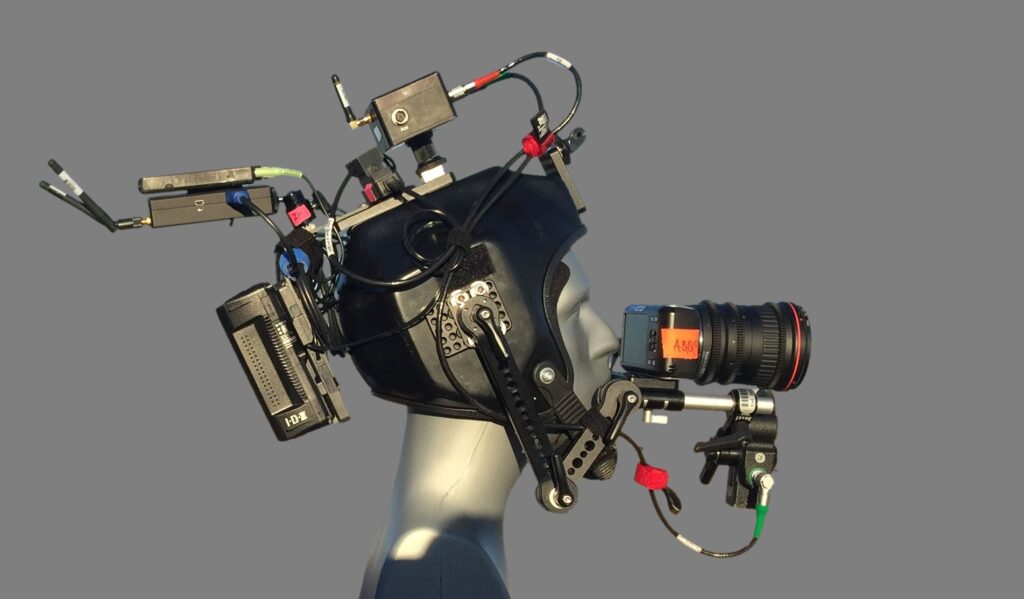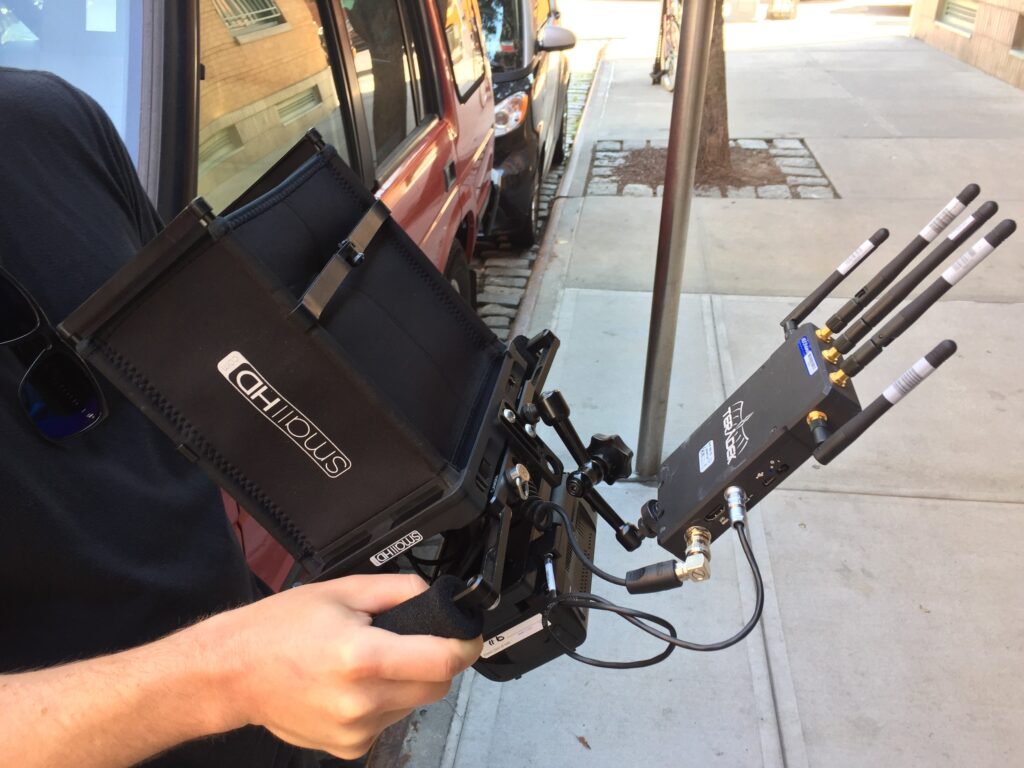A custom helmet-mounted camera system that solved the challenges of professional POV filming through innovative power management and wireless control.

Completed rig including the Blackmagic Pocket Cinema Camera
In an era when wireless earbuds were still science fiction and “hands-free” meant a clunky Bluetooth headset hanging off your ear, I found myself facing an interesting challenge. A tech startup called SkyBuds (think pre-AirPods pioneer) wanted to showcase their revolutionary wireless earbuds in a commercial shot entirely from the wearer’s perspective. There was just one tiny problem: POV camera rigs in 2014 were about as sleek as strapping a microwave to your head.
The Genesis of SkyRig
Rather than settling for existing bulky and expensive options, we decided to channel our inner Tony Stark. Together with my long-time collaborators Andy Fortenbacher and Adam Tenenbaum at ASC Studios, we embarked on creating what would become the SkyRig – a helmet-mounted POV camera system that would make GoPro users do a double-take.
Technical Deep Dive
The SkyRig wasn’t just a camera strapped to a helmet (though that would’ve made our lives much easier). Here’s what made it tick:
Core Components
- Blackmagic Pocket Cinema Camera as the primary imaging device
- Custom-machined mounting system with adjustable rosette arm
- Teradek wireless video transceiver system for live monitoring
- Remote follow focus unit with high-torque motor system
- V-Lock battery plate serving as both power plant and counterweight

Two Teradek wireless monitor systems for the directory and cinematographer
Power Management
The system’s electrical architecture was particularly clever (if I do say so myself). We implemented a centralized power distribution system using:
- IDX V-Lock lithium-ion batteries
- D-TAP 12V output for primary power
- Multiple 5V outputs for auxiliary devices
- Custom power splitter feeding the follow focus and Teradek units
- Direct power line to the Blackmagic camera
Balance and Ergonomics
Physics wasn’t going to be our friend with all this gear, so we got creative:
- Positioned the Teradek transmitter at the center of gravity
- Used the V-Lock battery system as a counterweight on the rear
- Implemented an adjustable rosette arm for perfect camera positioning relative to the operator’s eye line

Our camera operator wearing the Skyrig for a POV bike ride

Director holding his wireless monitor with Teradek HD receiver
Image Control
We didn’t just want pretty pictures; we needed precise control:
- Wireless follow focus control for dynamic focus pulling
- Remote exposure control via custom app integration
- Recording in Blackmagic Design Film Log for maximum post-production flexibility
Why It Worked (When Most POV Rigs Don’t)
The secret sauce wasn’t any single component – it was the integration. Most POV rigs fail because they treat the camera as the star of the show. We treated it as just one instrument in an orchestra. The ability to adjust focus on the fly while maintaining perfect exposure, all while broadcasting a live feed to the director and cinematographer, made it a genuine production tool rather than a gimmick.
The Evolution of POV Technology
Looking back from 2024, it’s amazing how far we’ve come. Today’s components are roughly half the size thanks to advances in Chinese manufacturing and microelectronics. Modern cameras like the latest Blackmagic Pocket series could make the rig even more compact. Yet surprisingly, the core design principles of the SkyRig remain relevant – proper weight distribution, centralized power management, and wireless control are still crucial for any successful POV system.
The Legacy
The SkyRig found its home at Milk Studios in Manhattan, where it’s been used in numerous commercials and films. While technology has evolved, our basic approach – solving complex technical challenges through thoughtful design and integration – remains as relevant as ever.
In a world where innovation often means adding more features, sometimes the best solution is about finding the right balance. Sometimes literally, when you’re trying to keep a camera from face-planting your talent.
Fun fact: The total weight of batteries needed to power the rig was coincidentally perfect for counterbalancing the camera system. As we like to say in the industry, there are no mistakes in engineering, only happy accidents that we take full credit for.
